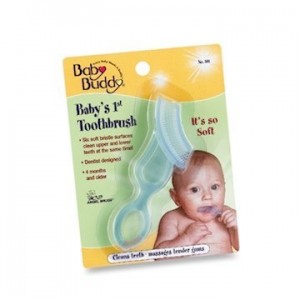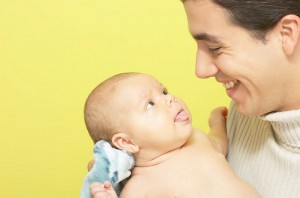When should you start cleaning your baby’s teeth?
It is a good idea to start cleaning your baby’s mouth even before the eruption of his first deciduous tooth. You can simply wrap a gauze or a wet cloth around your finger and rub it gently over the gums and tongue. This will help remove the milk residue which is left on the tongue surface. Even before tooth eruption, bacteria is present in the baby’s mouth but it usually doesn’t harm the gums. But we cant decide for certain when the baby’s tooth is emerging from the gums. Therefore cleaning the baby’s mouth will protect the erupting tooth from being damaged by the bacteria. This will also make an easier transition into toothbrushing when the child grows. You will have to brush your baby’s teeth until he can hold a toothbrush on his own, which is at 5 to 7 years of age because his motor development has not completed.https://www.intelligentdental.com/category/baby-teeth-2/
The first deciduous teeth start to appear around 6 months of age but sometimes delayed until 15 to 18 months in some healthy babies. You will have to choose a suitable baby toothbrush to brush your baby’s teeth. In the early stages, toothpaste is not necessary because children tend to swallow the toothpaste. Toothpaste contains fluoride, a substance when ingested in large amounts will cause a condition known as fluorosis. Dental fluorosis is common in children between 1 to 4 years old because teeth development is rapid at this stage.
It is important to regularly clean your baby’s teeth. Brush the teeth gently on both the outside and inside surfaces. Just a few strokes of the will do. Vigorous brushing will damage the immature enamel of the baby teeth.Do it twice a day.
Here are some tips on how to make toothbrushing for babies easier, more affective and interesting:
1. Brush with the child
Stick a toothbrush into your mouth while teaching your child to brush his own teeth. Children love to imitate their parents. And once you get him to hold a toothbrush, teach him the proper way to brush and the appropriate amount and type of toothpaste to use.
2. Choose the right toothbrush
Your baby’s toothbrush should be appropriate with his age and is usually indicated on the packaging.Baby’s toothbrush should have soft bristles and a small head which allows to reach all parts of his mouth.The handle should be thick for a firm grip. Replace the toothbrush every 3 months or after the bristles have started to spread out. Find a toothbrush which looks appealing to the child, with conspicuous color, interesting shapes and animal prints.
should have soft bristles and a small head which allows to reach all parts of his mouth.The handle should be thick for a firm grip. Replace the toothbrush every 3 months or after the bristles have started to spread out. Find a toothbrush which looks appealing to the child, with conspicuous color, interesting shapes and animal prints.
3. Choose the appropriate toothpaste
The American Academy of Pediatric Dentistry recommends that fluoridated toothpaste should only be used on children above 2 years old. You should let your child use only a pea sized amount of paste each time he brushes and make sure he spits it out. Swallowing too much toothpaste over time can cause fluoride toxicity and dental fluorosis. Choose children’s toothpaste which comes in various yummy fruity flavors.
4. Make toothbrushing interesting
Children tend to throw tantrum or get cranky when asked to brush his teeth. You can tell a tooth story or bring his toys into the washroom to grab his attention. After all, children love stories and pampering!
